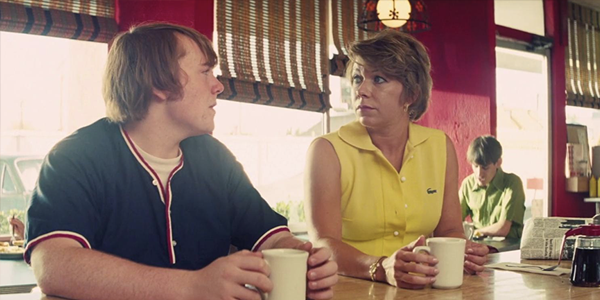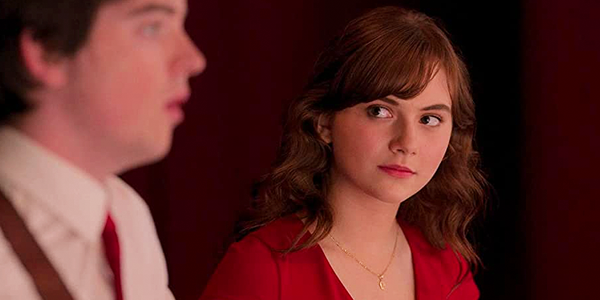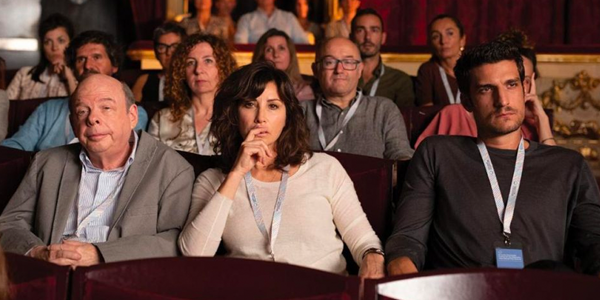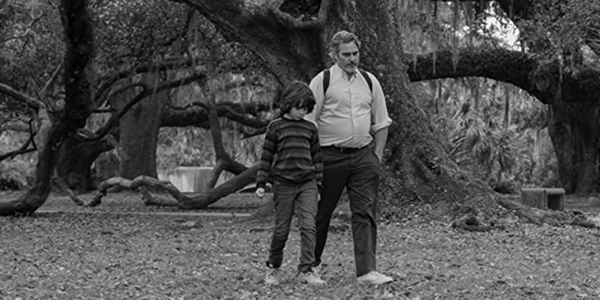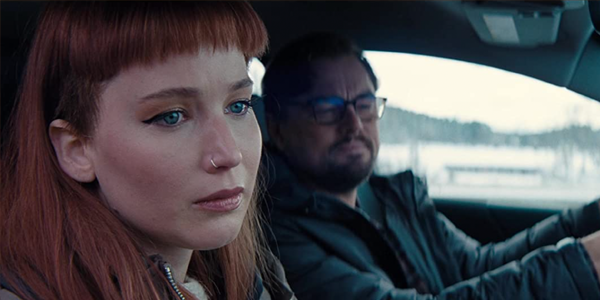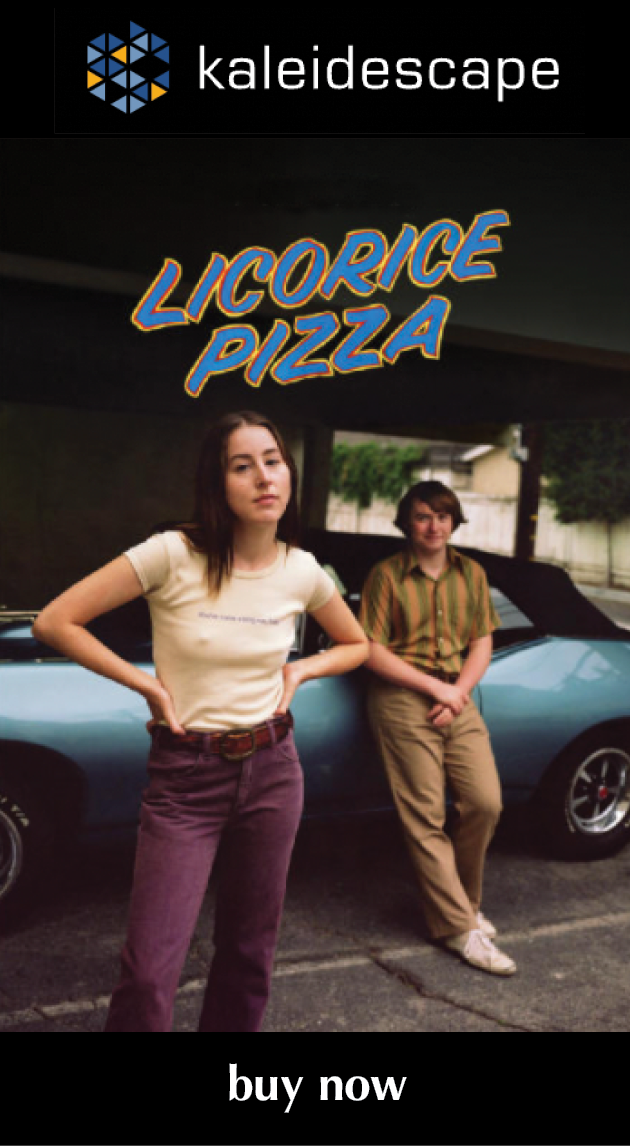related review
recent reviews
Sign up for our monthly newsletter
to stay up to date on Cineluxe
This Best Picture nominee deserved better than this compromised non-HDR 1080p home release
by Dennis Burger
March 4, 2022
Seriously, what the hell is going on with Hollywood these days, especially on the home video side? Of all the films I’ve seen in the past year, if any of them begs to have been released in UHD HDR, it is Paul Thomas Anderson’s Licorice Pizza. Shot on a variety of Kodak Vision3 stocks, it was finished photochemically instead of in a digital intermediate, and even exists in the form of a 70mm blowup that saw some limited theatrical exhibition.
It’s one of Anderson’s most visually captivating movies, and that’s saying a lot. It boasts an image that can only be described as a celebration of the classic cinema aesthetic, but for whatever reason, MGM has seen fit to dump the film to market on Blu-ray or in Blu-ray-equivalent resolution for its home video release.
I can understand not wanting to fork over the dough for UHD Blu-ray disc replication. There have been so many supply-chain issues with 4K discs in the past few years that it’s almost not worth the trouble anymore, for studios or consumers. But to limit digital retailers—including Kaleidescape—to a compromised 1080p SDR transfer is borderline criminal. And look, I don’t want to give the impression Licorice Pizza is a sacrosanct cinema masterpiece. It’s roughly on par with 2017’s Phantom Thread—a bit of a step down from 2007’s There Will Be Blood but a big step up from 2014’s Inherent Vice—if you’re looking to rank it within PTA’s most recent output.
But so much of the film’s delightful look hinges on its delicious organic chaos, its unapologetic analog nature. So to limit it by squashing it to fit video standards from 16 years ago just doesn’t make a lick of sense. Even on Kaleidescape—which delivers a better-than-Blu-ray-quality download—you can at times see the image struggling against its constraints.
Not consistently, and not egregiously, but there are numerous instances throughout in which flesh tones lack that nuance, highlights are blown out, and detail is lost in the shadows. Put this transfer in front of me back in 2015 and I would have found it wholly acceptable. But I’ve been so spoiled by HDR and the way it unlocks the full color spectrum and tonal range of photochemical film negatives that I now find these limitations glaring and distracting. There are also one or two scenes in which I felt UHD’s enhanced resolution might have rendered the film grain a little more finely and a few long shots with more meaningful detail.
Should you use any of this as an excuse to skip Licorice Pizza? Of course you shouldn’t, especially if you’re a fan of Anderson’s work. It is in many ways indicative of his continued evolution as a filmmaker, especially in terms of the emphasis on artful composition over whiz-bang camera wizardry.
As always, though, the heart of the story is character interaction, and it very much follows the PTA template of throwing two humans together, having them bounce off one another, and seeing what comes from that. It is, in other words, a further distillation of his “Just get two people talking” approach to story writing.
Interestingly, though, while so many of the characters in his previous films could best be characterized by their almost pathological need to define themselves for others, that’s less the case here. One of the two main characters—Alana, played brilliantly by pop-rocker Alana Haim—at times grapples with others’ perceptions of her, but seems less inclined to paint a rose-colored picture of herself and force those around her to accept it than you might expect an Anderson character to do. In fact, she spends far more time looking for other people to define her or at least to affirm her own self-image. That’s part of why Licorice Pizza feels more consistently honest than many of the filmmaker’s previous efforts, but there’s also the fact that he doesn’t employ nearly as much visual/verbal misdirection here.
Overall, it’s as meandering and unfocused an experience as you might expect but it’s worth the journey if only for Haim’s performance. She is an utterly effortless and hypnotic screen presence—the sort of actor who makes you forget she’s acting at all. I found myself shocked at times that co-stars the likes of Sean Penn and Tom Waits could come close to matching her natural energy.
And you could say the same about her co-lead, Cooper Hoffman. Had he failed to rise to Haim’s level, nothing about the film would have worked. But he did, and it does. My only real beef with the substance of the film—aside from its somewhat messy structure—is that it seems like Anderson just had no clue how he wanted the story to end, and as such it ends . . . weirdly. It will, I imagine, be a divisive conclusion even among those who enjoy the rest of the film.
But as for the home video presentation? You’ll hear no such ambivalence from me. I’m pissed. The sound is good, mind you—a rather front-focused DTS-HD Master Audio 5.1 mix that would have worked just as well in 3.1 or stereo. But the important thing is that it does justice to the dialogue, the fantastic soundtrack music, and the fascinating score by Jonny Greenwood, who is quickly becoming one of my favorite modern film composers.
The picture, though, is inexcusable. And I don’t blame Kaleidescape here—they delivered an unimpeachable encode based on the materials given to them. I lay the blame squarely at the feet of MGM. Will we see a bait-and-switch of the sort Universal pulled with Phantom Thread, which dropped in HD resolution only at first and was followed by a UHD release a month later? I can’t know, of course, but I hope so. At the very least, if the studio manages to get its act together with this one, the upgrade path will be easy for Kaleidescape owners.
Dennis Burger is an avid Star Wars scholar, Tolkien fanatic, and Corvette enthusiast who somehow also manages to find time for technological passions including high-end audio, home automation, and video gaming. He lives in the armpit of Alabama with his wife Bethany and their four-legged child Bruno, a 75-pound American Staffordshire Terrier who thinks he’s a Pomeranian.
PICTURE | Kaleidescape does an excellent job with its better-than-Blu-ray-quality download, but you can see the image struggling at times against the constraints of the studio-supplied 1080p SDR transfer they had to work with
SOUND | The front-focused DTS-HD Master Audio 5.1 mix would work just as well in 3.1 or stereo but does justice to the dialogue, the soundtrack music, and the Jonny Greenwood score
© 2023 Cineluxe LLC



